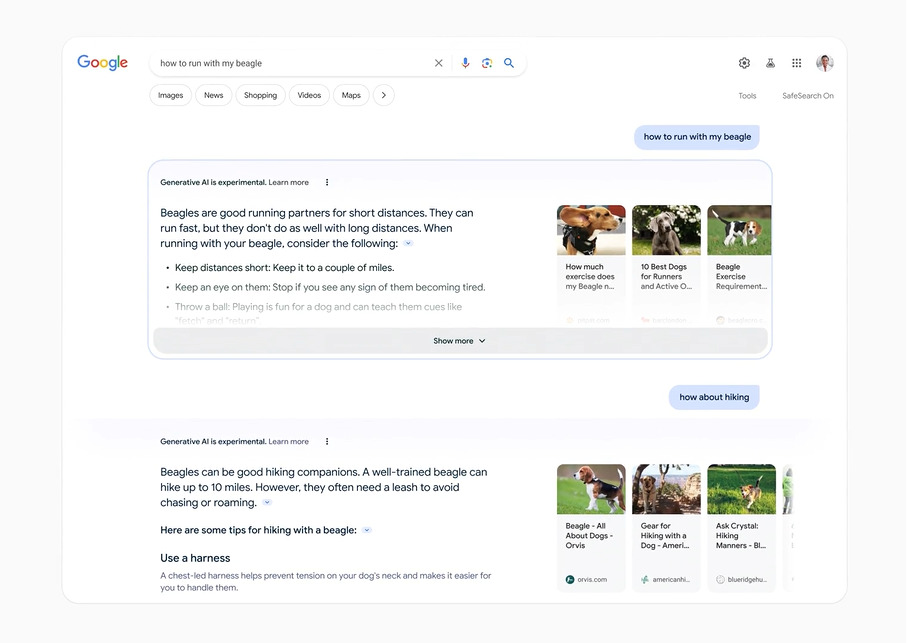Affiliate links on Android Authority may earn us a commission. Learn more.
Google's generative AI search feature is now available in over 120 countries

- Google’s Search Generative Experience (SGE) is getting its biggest expansion yet.
- The AI-powered feature is now available in over 120 countries.
- SGE is also getting support for four new languages.
It’s been about six months since Search Generative Experience (SGE) launched for Google Search. Since its launch, the AI-powered search feature has gradually rolled out to more and more countries. Now Google is expanding the availability of SGE to 120 additional countries while adding some new functions.
Initially, SGE was only available in the US for those who signed up for Search Labs. It eventually landed in India and Japan, while adding Hindi to its supported languages. Today’s announcement reveals the feature is rolling out globally to Mexico, Brazil, South Korea, Indonesia, Nigeria, and more. The company has also increased the number of supported languages, adding Spanish, Portuguese, Korean, and Indonesian.
New Features
Google’s SGE currently allows you to search for something and follow it up with another question. Google says it is creating a new way to ask follow-up questions directly from the results page. Going forward, you’ll now be able to see your prior questions and search results after asking a follow-up question. This feature is coming to the US first in English within the coming weeks.

The tech giant is also improving translations so they provide more context. If a word has more than one meaning, SGE will pick up on that and offer multiple meanings for that word. For example, the word “tie” could refer to a clothing item or a contest with no winner. Google says these words will be underlined and can be tapped on for more context.
Tap any of those words and you can indicate the specific meaning that reflects what you want to say. This option may also appear when you need to specify the gender for a particular word.
This feature is said to be coming soon for English-to-Spanish translations. There’s no exact date, but other translations are expected to come in the “near future.”
The last update involves the definitions feature meant for educational topics. Previously, it was used for topics like science, economics, and history, but in the next month, it will include coding and health. Like the other features, it’s coming to the US first, with other countries to follow.